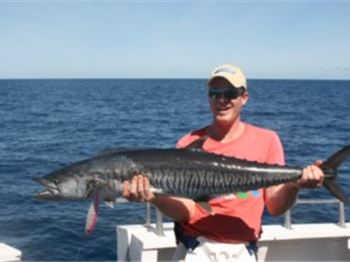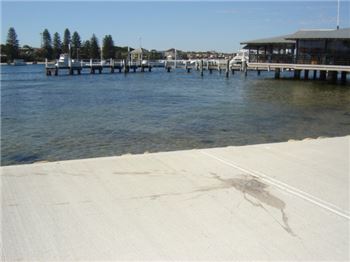Learning more about swivels - Part 2
The previous article looked at barrel, box and ball-bearing swivels and what advantages and disadvantages they brought to fishing. This continues by looking at three-way swivels and snap or clip swivels.
THREE-WAY SWIVELS
Rather than having two rings to connect line to, the three way swivel offers an additional connection point which provides the angler with an extra position to join a length of line leading out to a hook. They are generally used when bottom fishing. The rig takes shape with the main line or a leader connected to the top ring, a line leading out to the hook off the side ring and the bottom ring is either used for a line leading to another three way swivel and a hook or to a sinker.
There are a number of advantages in using these swivels. Firstly, they are designed to reduce tangles between your hooks and mainline by providing an arm off the swivel which separates the two. Secondly, they allow you to use different strength lines between each piece of tackle if the situation you are fishing requires it. For example, if you were going to fish a place that you knew would cost you in lost tackle - a spot where the reef or rocks on the ocean floor were a part of fishing the place and there was no way around it - using a three-way swivel allows you to run lighter line from the bottom ring of the swivel down to the sinker so when you snag that light line is the first place to break. This means that rather than lose your whole rig each time you snag you are likely to only leave the sinker behind.
Three-way swivels have advantages when fishing in reefy territory
The downside with using these swivels is that each knot you tie represents a weak spot in the rig. If you fish with two hooks and therefore use two swivels there would be five knots that if not tied properly could result in you losing fish. To circumvent this some anglers choose not to use the swivels and tie a rig using dropper loops instead. This uses one piece of line from the top, through the hooks and down to the sinker.
SNAP / CLIP SWIVELS
Technically these aren't swivels in themselves but are a clip joined to a barrel / box / crane / ball bearing type of swivel. The clip offers practical benefits but also has some potential pitfalls to it which can be valuable to be aware of.
The clear benefit of using a clip is the ease of changing lures or rigs which are attached. I regularly fish for herring off the North and South Moles in Fremantle and I find that squid are attracted to the burley and activity of the fish. For this reason when I use a burley float I connect it to my main line via a clip swivel. This means when I notice a squid following a fish up or swimming around in my burley I can quickly take off the float, snap on a jig, and get me some calamari as well as herring for tea. 
Use clips swivels in situations where quick lure or rig changes are necessary
The flip side of clips is they can come undone. There are many stories of people getting fish to the side of the boat, particularly after trolling up something special, only to have the fish and lure float away due to the clip opening. There are a number of ways you can get around using snap swivels in this instance depending on the type of fish you are chasing. The first is to connect the leader to your lure by using a loop knot. This is easy to tie and it lets the lure maintain its mobility however it can result in line twist. Another method is to tie a swivel to the leader and then connect it to the lure with a split ring. If you have split ring pliers using this setup only adds a small amount of time to the task but it results in a significantly more reliable rig.
CONCLUSION
After using your swivels don't forget to give them a rinse to make sure they are clean and rotating freely for the next time you head out. When using cheaper swivels it might be easier to drop the used item in the bin considering the price you've paid for it but that's always going to be a personal choice. They will last for multiple uses but keep in mind some of the principles discussed in the article, particularly regarding barrel swivels.
A basic understanding of swivels and their uses will help your fishing. You will find a range of swivels types outside of the above list next time you head into your tackle store but in essence they all achieve the same purpose but with slight differences.
Written by Ben Derecki for Seabreeze.







